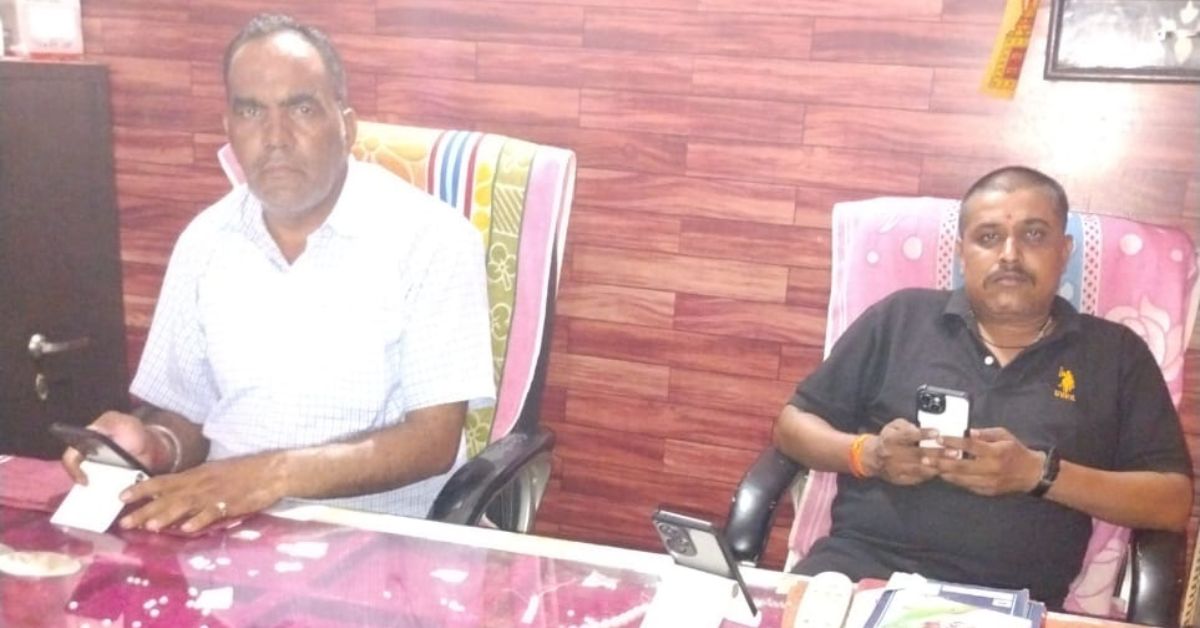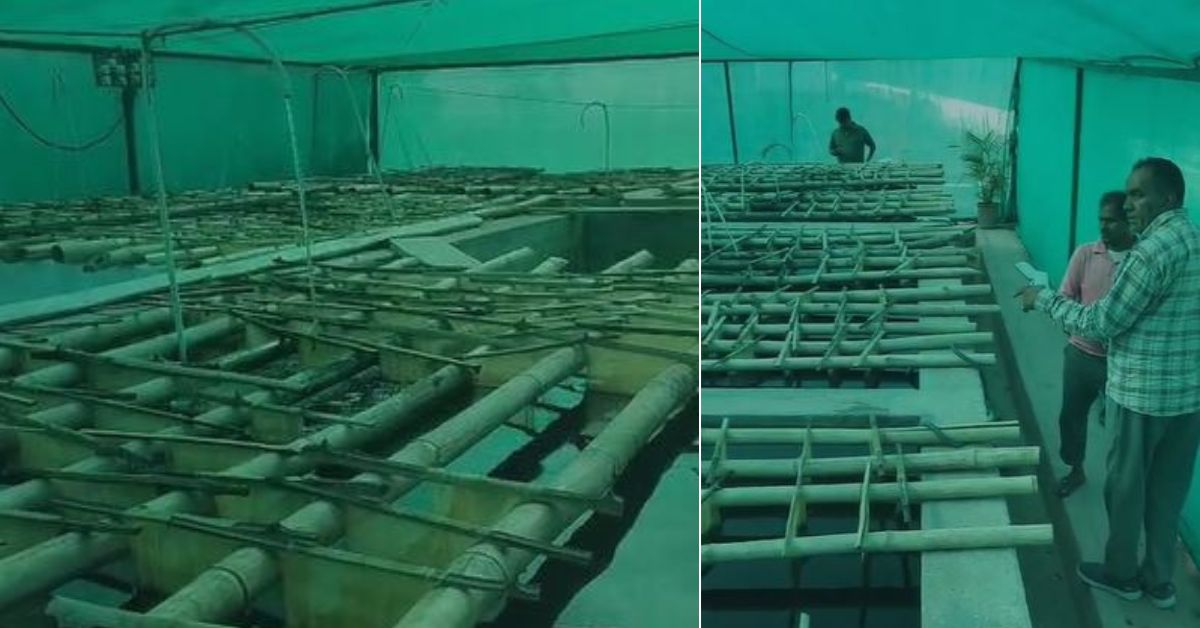How an Online Ad Inspired 2 Factory Workers to Build a Rs 1 Cr Pearl Farming Business
On an ordinary afternoon inside a bustling textile factory in Haryana, Salinder Kumar and his colleague Rajesh Goswami stumbled upon something that would change their lives forever.
For years, the duo had worked side by side — Salinder on the machines, Rajesh at a desk — barely making ends meet. “Jobs offered security but restricted us. We were searching for ways to break free,” Salinder recalls.
During a short break in 2013, Rajesh was browsing the internet when an unusual ad caught his eye — a training programme on pearl farming by the Central Institute of Freshwater Aquaculture (CIFA) in Bhubaneswar, Odisha.
He called Salinder over. “Pearl farming?” Salinder asked, puzzled. It was unlike anything they had ever done. But the idea took root — driven by their shared dream of financial freedom.
The advertisement presented an opportunity that promised an income free of ceilings. The notion of cultivating something as luxurious as pearls sparked a flicker of hope that perhaps this was their chance to redefine their fortunes.
 Salinder and Rajesh turned an ordinary afternoon into a life-changing moment by discovering a pearl farming ad online.
Salinder and Rajesh turned an ordinary afternoon into a life-changing moment by discovering a pearl farming ad online.
The seed of an unlikely dream
“Earlier, the idea of doing poultry farming had crossed our minds. It was a safer, more familiar avenue, but fraught with cutthroat competition. Pearl farming, though foreign, offered an untapped potential, a niche that was waiting to be explored,” says 47-year-old Salinder.
The decision to leap into the unknown sea of possibilities, as Salinder would later describe it, began to take root.
Empowered by the thought of being their own bosses, Salinder and Rajesh mustered the courage to explore this new venture. The duo decided to enrol in the CIFA’s two-day training course in Bhubaneswar, Odisha.
This did not come without its share of scepticism. Friends and family expressed the typical concerns: How could they manage a farm while anchored to factory jobs? What if they failed? But for Salinder and Rajesh, the prospect of continued financial strain was a stronger deterrent than the fear of the unknown.
The training greeted them with a richness of learning and hands-on experience that opened their eyes to the nuances of pearl farming. “We learned the delicate balance required in water conditions and the science behind nurturing mussels to create pearls,” shares Salinder.
Their excitement was palpable as they absorbed each detail — methodically grasping the art and science that sustained this venture.
 Starting with six cement tanks at Salinder’s home, they invested Rs 3.5 lakh in quality mussels to begin their pearl farming venture.
Starting with six cement tanks at Salinder’s home, they invested Rs 3.5 lakh in quality mussels to begin their pearl farming venture.
Learning to grow pearls
Upon returning from Odisha, the friends continued working in the factory while concurrently setting up their pearl farming business. Their plan was simple: start small, learn as they go, and apply the knowledge they had gained to practical applications.
At Salinder’s home, they constructed six cement tanks, each measuring 10 feet by 10 feet, which would serve as the sanctuary for their first set of mussels.
Their investment of Rs 3.5 lakh included procuring quality mussels from the coastal areas of Odisha. They judiciously selected the golden brown variety, renowned for yielding superior pearls. “Every mussel was handpicked,” Salinder reminisces with pride.
Even with their day jobs, every free moment was dedicated to maintaining the tanks, ensuring water conditions were optimal for nurturing pearl-producing mussels. Those evenings were filled with discussions and charting the gradual process of starting a business.
Patiently, they checked pH and TDS (total dissolved solids) levels, manipulated algae growth, and monitored the health of their mussels. Each successful step further fuelled their motivation.
Side hustle to full-time entrepreneurship
For months, Salinder and Rajesh managed to juggle factory work with their newfound passion. “It was not very difficult for us to manage both jobs. Anyone can start pearl farming as a side business,” adds Salinder.
The pearl farm, though small, began showing signs of promise. Their progress encouraged them to discuss an eventual exit from their factory roles. So, a year after setting up their farms, Salinder and Rajesh left their jobs and embraced entrepreneurship full-time with calculated risks.
After 13 months, their pearl farm flourished. “Only 30% of our mussels didn’t survive; the rest produced high-quality pearls,” smiles Salinder.
 Pearl farming offered them both a new career and a way out of wage labour.
Pearl farming offered them both a new career and a way out of wage labour.
With a burgeoning understanding of pearl farming, scaling the venture became the next logical step. The friends expanded their operations, setting up additional farms of one lakh mussels across the Andaman and Nicobar Islands and Daman.
Their leap into the uncharted had transformed into a full-blown enterprise, with a turnover reaching Rs 1 crore under the brand ‘Jai Shri Pearl Farming’. Over the years, their brand has begun to carve its name, selling pearls both domestically and internationally from the United States to Canada and Australia.
Training others to shine
Furthermore, the duo has also trained more than 200 local people interested in taking up pearl farming. One of them, Santosh Kumar, embarked on his pearl farming journey in 2022 after undertaking training from them.
Sharing his experience, the Ambala resident says: “The two-day training was both theoretical and practical. The initial charges of Rs 6,000 for the training were subtracted from the cost of the equipment and mussels I purchased. This essentially made the training free.”
Four months after completing the training, Santosh set up his own pearl farm. He now operates 17 cemented tanks, each measuring 10 by 10 feet, on an ancestral property that was previously unused. This initiative has proven successful; having invested Rs 1 lakh, Santosh earned Rs 2.5 lakh in just 13 months from his first batch of pearls.
 The duo has trained over 200 locals in pearl farming.
The duo has trained over 200 locals in pearl farming.
“I balance this venture along with my private job. I find pearl farming to be less labour-intensive than conventional agriculture. This makes it an ideal part-time business. With Salinder Ji’s help in marketing my products, I also have no difficulty finding customers for his pearls,” he adds.
For Salinder and Rajesh, that CIFA advertisement did more than spark curiosity — it ignited a drive to take charge of their futures.
The success of their pearl farming venture has transformed Salinder’s personal life too. “I moved from a 20 marla (~5,500 sq ft) house to a 9,000 sq ft home, bought a four-wheeler, and my kids are now studying abroad. Rajesh and I even built our own office,” he shares.
Looking back, Salinder urges young people to embrace innovation in farming. “With technology, hard work, and a willingness to learn, no barrier is too big,” he says. “Each day brings new challenges, but perseverance can lift you from the ground to the sky.”
All images courtesy: Salinder Kumar.
News